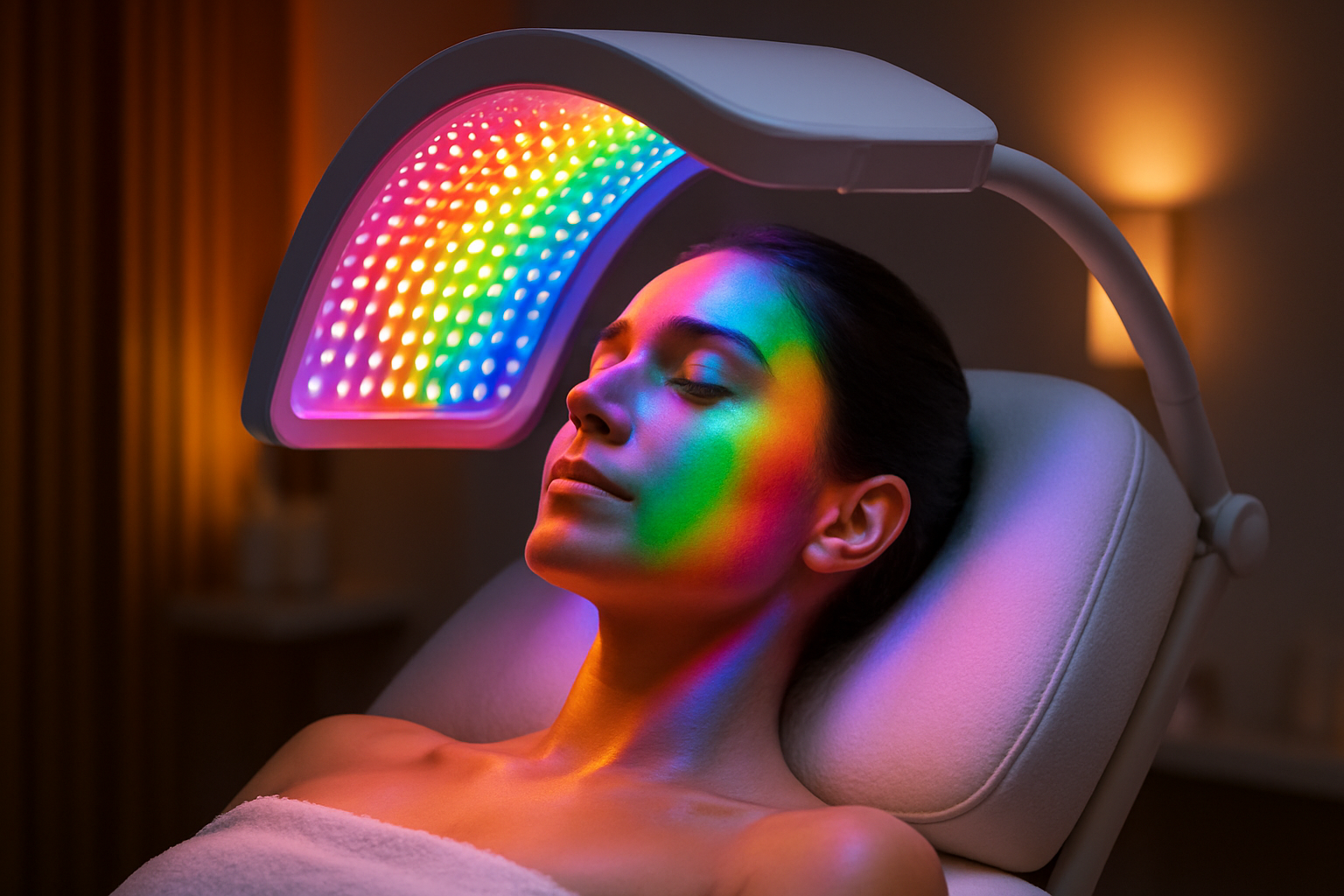Chromotherapy: The Spectrum of Wellness
In the ever-evolving landscape of beauty and wellness, a captivating practice is gaining momentum, promising to revolutionize our approach to self-care and holistic health. Chromotherapy, also known as color therapy, harnesses the power of light and color to promote physical, emotional, and mental well-being. This ancient healing modality, once relegated to the fringes of alternative medicine, is now making waves in spas, wellness centers, and even home care routines. As we delve into the vibrant world of chromotherapy, we'll explore its rich history, scientific underpinnings, and modern applications in the pursuit of balance and vitality.

Throughout history, color has played a significant role in human perception and well-being. The famous Greek physician Hippocrates recognized the therapeutic potential of color, using it in his treatments. In the Middle Ages, the healing properties of colored light filtered through stained glass windows in cathedrals were believed to have curative effects on worshippers.
The Science Behind the Spectrum
While the historical foundations of chromotherapy are intriguing, modern research is shedding new light on the potential benefits of color therapy. The fundamental principle behind chromotherapy is that different colors of light possess varying wavelengths and energy levels, which can influence our physiological and psychological states.
Recent studies have explored the effects of specific colors on human biology. For instance, exposure to blue light has been shown to suppress melatonin production, potentially improving alertness and cognitive function. Conversely, red light therapy has demonstrated promising results in skin rejuvenation and wound healing.
The field of photobiomodulation, which investigates the effects of light on cellular function, has provided valuable insights into the mechanisms behind chromotherapy. Research suggests that certain wavelengths of light can stimulate mitochondrial activity, potentially enhancing cellular energy production and promoting healing processes.
Chromotherapy in Modern Wellness Practices
As the beauty and wellness industry embraces a more holistic approach to health, chromotherapy is finding its way into various treatments and products. Luxury spas now offer chromotherapy sessions, where clients are immersed in rooms bathed in specific colors of light, each aimed at addressing different concerns such as stress reduction, energy boost, or relaxation.
In the realm of skincare, LED light therapy masks have gained popularity for their purported benefits in treating acne, reducing inflammation, and stimulating collagen production. These devices typically offer multiple color options, allowing users to customize their treatment based on their skin concerns.
The fitness world has also begun to incorporate chromotherapy into workout environments. Some boutique gyms and yoga studios now feature color-changing lighting systems that sync with the intensity and mood of the exercise, aiming to enhance performance and overall experience.
The Rainbow of Benefits
Proponents of chromotherapy claim a wide array of benefits associated with different colors:
-
Red: Stimulates circulation and energy levels, potentially aiding in the treatment of fatigue and skin conditions.
-
Blue: Promotes calmness and relaxation, potentially helpful for stress reduction and sleep improvement.
-
Green: Associated with balance and harmony, believed to support the immune system and promote overall well-being.
-
Yellow: Linked to mental clarity and positivity, thought to aid in concentration and mood elevation.
-
Purple: Connected to spiritual awareness and creativity, used in meditation practices for enhancing intuition.
While many of these claims require further scientific validation, preliminary research and anecdotal evidence suggest potential benefits in various areas of health and wellness.
Integrating Chromotherapy into Daily Life
Beyond professional treatments, individuals are finding creative ways to incorporate chromotherapy into their daily routines. Color-changing light bulbs and smart lighting systems allow people to adjust the ambient lighting in their homes to suit their mood or desired energy level.
In the beauty realm, color-correcting makeup and skincare products draw inspiration from chromotherapy principles, using different hues to address specific skin concerns. For example, green-tinted primers are used to neutralize redness, while purple-toned products aim to brighten sallow complexions.
Some wellness enthusiasts have even begun experimenting with “color meditation,” a practice that involves visualizing specific colors while meditating to achieve desired mental and emotional states.
The Future of Chromotherapy: A Bright Outlook
As research in the field of light therapy continues to advance, chromotherapy is poised to play an increasingly significant role in the beauty and wellness industry. The integration of chromotherapy with other emerging technologies, such as virtual reality and biofeedback systems, holds promise for creating more personalized and effective treatments.
However, it’s important to approach chromotherapy with a balanced perspective. While the potential benefits are intriguing, more rigorous scientific studies are needed to fully understand and validate its effects. As with any wellness practice, chromotherapy should be viewed as a complementary approach rather than a replacement for conventional medical treatments.
In conclusion, chromotherapy represents a fascinating intersection of ancient wisdom and modern science in the pursuit of holistic well-being. As we continue to explore the intricate relationships between light, color, and human health, chromotherapy may well emerge as a powerful tool in our collective quest for balance, beauty, and vitality. The future of wellness looks bright indeed – and it’s painted in all the colors of the rainbow.





